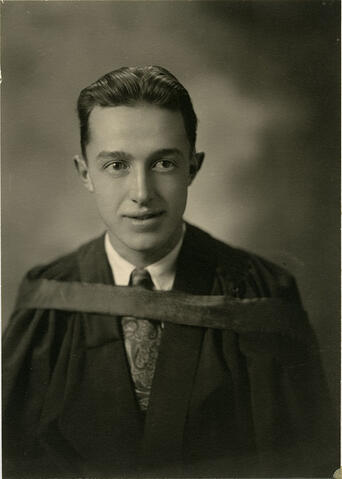
Zona do título e menção de responsabilidade
Título próprio
David S. Kirkbride - Portrait
Designação geral do material
- Material gráfico
Título paralelo
Outra informação do título
Título e menções de responsabilidade
Notas ao título
Nível de descrição
Item
Entidade detentora
Código de referência
Zona de edição
Menção de edição
Menção de responsabilidade da edição
Zona de detalhes específicos de materiais
Menção da escala (cartográfica)
Menção da projecção (cartográfica)
Menção das coordenadas (cartográfico)
Menção da escala (arquitectura)
Autoridade emissora e denominação (filatélica)
Zona de datas de criação
Data(s)
-
[1937?] (Produção)
Zona de descrição física
Descrição física
1 photograph : b&w ; 11 x 15.5 cm
Zona dos editores das publicações
Título próprio do recurso continuado
Títulos paralelos das publicações do editor
Outra informação do título das publicações do editor
Menção de responsabilidade relativa ao editor do recurso contínuo
Numeração das publicações do editor
Nota sobre as publicações do editor
Zona da descrição do arquivo
Nome do produtor
História custodial
Âmbito e conteúdo
Head and shoulders image of David S. Kirkbride, all-around Huskie athlete, in academic robes.
Bio/Historical Note: David Spencer Kirkbride was born in 1913 in Calgary. He graduated from Central Collegiate in Regina, winning the Governor General’s Bronze Medal, then attended the University of Saskatchewan from 1930-1937, where he earned a BE in civil engineering (1934) and an MSc (1937) in structural engineering. He was a member of five Huskie track & field teams, four of which captured the Cairns Trophy as WCIAU champions. He was manager of the track & field team for one year and captain another. He competed in sprints, hurdles, relay and pole vault. Kirkbride also competed in other sports, including as a forward on the basketball team for four years and captain for two. He competed in backstroke on the swim team. For his achievements, Kirkbride received a Major Athletic Award. He served as the first president of the Men's Athletic Directorate and was president of the Huskies hockey team, both during 1934-1935.
Dr. C.J. Mackenzie, former dean of Engineering at the University of Saskatchewan, was in charge of constructing a reinforced concrete bridge across the North Saskatchewan River at Borden during the Depression. He realized the need for the application of soil mechanics technology to the design of bridge foundations. One of Mackenzie’s brightest graduate students was Kirkbride. Who worked on the project between 1935-1937. Upon graduation that same year and finding no employment in Saskatchewan, Kirkbride obtained work with Monsarret and Pratley, bridge engineers in Montreal, but when that job petered out, he moved on to Canadian Industries Limited (CIL) in that city to work as a draftsman. Kirkbride became aware of the developments taking place in soil mechanics and foundation engineering. He approached the leading foundation firm in Canada, the Foundation Company in Montreal, proposing that they should employ him, sponsor his graduate training at Harvard, and thereby gain the benefit of soil mechanics knowledge on his return. But they were skeptical of the practical application of the new science, and nothing came of this. Nevertheless, Kirkbride applied to Harvard Graduate School, obtained a scholarship, and in 1938-1939 became the first Canadian to earn an MA in soil mechanics. Upon graduation, Kirkbride tried to persuade the Dean of Engineering at McGill University to introduce soil mechanics into their teaching program, but at the time the Dean didn’t appreciate that the subject was worthwhile. However the PFRA was planning some larger dam projects and Dr. Mackenzie was influential in persuading this organization that they should utilize the soil mechanics training that Kirkbride had acquired at Harvard. He was hired on staff as a junior engineer. Kirkbride worked for the PFRA only from his graduation in June through October 1939. During this short period he set up the first elementary wash-bore drilling equipment used to augment the digging of test pits and the boring of auger holes, the methods heretofore used which were limited in depth. Kirkbride also recommended to management the need for laboratory facilities, and gave some preliminary soil mechanics advice on a few dam sites. War came in September 1939, and knowing that PFRA activities would be curtailed during the war, Kirkbride returned to CIL to work in the war effort with its wartime counterpart Defence Industries Limited (DIL). Kirkbride spent the remainder of his substantial career with DIL and CIL, first in the engineering department, which greatly expanded in the war, then as resident engineer on the Atomic Energy Plant at Chalk River, Ontario. After the war, Kirkbride took on senior management roles with CIL, ending his career in the late 1970s as vice-president for Western Canada. David Kirkbride died in 1995.
Zona das notas
Condição física
Fonte imediata de aquisição
Organização
Idioma do material
Script do material
Localização de originais
Disponibilidade de outros formatos
Restrições de acesso
Termos que regulam o uso, reprodução e publicação
Other terms: Responsibility regarding questions of copyright that may arise in the use of any images is assumed by the researcher.

